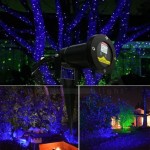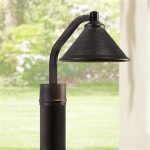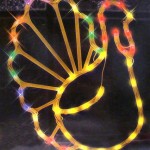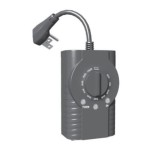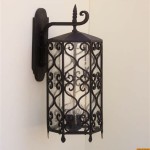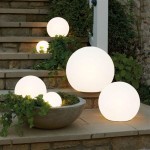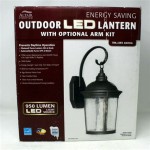Are Outdoor Sockets Waterproof? Understanding Weather Resistance and Safe Usage
The question of whether outdoor sockets are waterproof is a common one, particularly for homeowners and businesses seeking to extend electrical power to locations exposed to the elements. The straightforward answer is that no electrical socket can be entirely impervious to water under all conditions. However, outdoor sockets are designed with varying degrees of weather resistance to protect against moisture and ensure safe operation.
The term "waterproof" is often used loosely. In the context of electrical components, it's more accurate to discuss "weather resistance" or "water resistance." The level of protection provided by an outdoor socket is defined by its Ingress Protection (IP) rating. This rating system, outlined in international standard IEC 60529, classifies the degree of protection provided against the intrusion of solid objects (like dust) and liquids (like water). Understanding IP ratings is crucial for selecting the appropriate socket for a specific outdoor application.
The IP rating consists of two digits. The first digit indicates the level of protection against solid objects, ranging from 0 (no protection) to 6 (dust tight). The second digit indicates the protection against liquids, ranging from 0 (no protection) to 9K (protection against powerful high temperature water jets). For outdoor sockets, you'll typically find ratings with a second digit of 4 or higher. For example, an IP44 rating signifies protection against solid objects larger than 1mm and splashing water from any direction.
Therefore, while an outdoor socket may not be completely waterproof, it can be designed to withstand rain, splashes, and other forms of moisture exposure. Selecting the correct IP rating for the intended environment is essential for safety and longevity.
Key Point 1: Understanding IP Ratings for Outdoor Sockets
The Ingress Protection (IP) rating is the primary indicator of an outdoor socket's ability to withstand environmental hazards, specifically solid objects and liquids. As mentioned, the rating is composed of two digits, each representing a different protection level. Let's delve deeper into the significance of these digits in the context of outdoor sockets.
The first digit focuses on solid object protection. A rating of IP1X offers protection against objects larger than 50mm (like a hand), while IP4X protects against objects larger than 1mm (like wires or small tools). Higher ratings like IP5X offer dust protection, while IP6X provides complete dust-tight protection. While dust ingress might not seem as critical as water ingress for outdoor sockets, it can still contribute to corrosion and reduced performance over time, especially in dusty or sandy environments.
The second digit is arguably more crucial for outdoor applications as it relates directly to water resistance. Here's a breakdown of some common ratings: IPX4 provides protection against splashing water from any direction. IPX5 protects against water jets projected from a nozzle. IPX6 protects against powerful water jets. Higher ratings like IPX7 and IPX8 indicate protection against immersion in water for specified durations and depths. IPX9K is the highest level, indicating protection against powerful high-temperature water jets, often used in sanitation applications.
For typical residential outdoor applications, such as powering garden lights or tools, an IP44 or IP55 socket is often sufficient. However, for more exposed locations or areas prone to flooding, a higher rating like IP66 or IP67 may be necessary. It’s crucial to assess the specific environmental conditions to determine the appropriate IP rating for the socket.
Furthermore, it’s important to note that the IP rating only applies when the socket is properly installed and the cover is securely closed. A damaged or improperly sealed socket will not provide the stated protection level.
Key Point 2: Factors Contributing to Weather Resistance in Outdoor Sockets
Beyond the IP rating, several design and material choices contribute to the weather resistance of outdoor sockets. These features are specifically engineered to prevent water ingress and ensure safe operation in challenging environments.
One key factor is the material used in the socket's construction. Outdoor sockets are typically made from durable, weather-resistant plastics or metals like stainless steel. These materials are chosen for their ability to withstand UV exposure, temperature fluctuations, and the corrosive effects of moisture. Plastics are often UV-stabilized to prevent degradation and cracking under prolonged sunlight exposure. Metal components are often treated with protective coatings to resist rust and corrosion.
Another crucial aspect is the design of the socket's enclosure. Outdoor sockets typically feature a hinged or screw-on cover that provides a watertight seal when closed. This cover is often equipped with a rubber gasket or O-ring that compresses against the socket body to create a tight seal. The design of the cover is crucial in diverting water away from the internal electrical components.
Internal wiring and connections are also carefully designed to minimize the risk of water damage. Wires are often encased in waterproof insulation, and connections are often sealed with waterproof compounds to prevent corrosion and electrical shorts. Some sockets may even incorporate internal drainage channels to divert any water that does manage to enter the enclosure.
Furthermore, the installation method plays a significant role in maintaining weather resistance. Outdoor sockets should be installed by a qualified electrician to ensure proper sealing and protection against water ingress. The use of waterproof conduit and fittings is essential for running wiring to the socket. Incorrect installation can compromise the socket's weather resistance and create a safety hazard.
Finally, regular maintenance is essential for preserving the weather resistance of outdoor sockets. This includes inspecting the cover for damage, cleaning the gasket to remove debris, and periodically checking the wiring for signs of corrosion. Addressing any issues promptly can prevent more serious problems down the line.
Key Point 3: Safe Usage Practices for Outdoor Sockets
Even with a properly rated and installed outdoor socket, adhering to safe usage practices is paramount for preventing electrical hazards and ensuring the longevity of the equipment. Overloading the socket or using inappropriate appliances can compromise safety and damage the socket itself.
One of the most important safety precautions is to avoid overloading the socket. Each socket has a maximum current rating, typically indicated in amperes (A). Exceeding this rating can cause the socket to overheat, potentially leading to a fire. Before plugging in any appliance, check its power consumption (in watts) and divide by the voltage (typically 230V in many regions) to determine the current draw in amperes. Ensure that the total current draw of all appliances plugged into the socket does not exceed the socket's maximum rating.
Another critical practice is to use appliances that are suitable for outdoor use. Outdoor appliances are typically designed with enhanced weather resistance and safety features. Using indoor appliances outdoors can expose them to moisture and hazards they are not designed to withstand, potentially leading to electrical shock or damage to the appliance.
Extension cords used with outdoor sockets should also be specifically designed for outdoor use. These cords are typically thicker and more durable than indoor cords, with weather-resistant insulation and grounded plugs. Avoid using damaged or frayed extension cords, as these can pose a serious electrical hazard.
When not in use, the cover of the outdoor socket should always be securely closed to protect the internal components from moisture and debris. Regularly inspect the cover and gasket for damage and replace them as needed. If the socket shows any signs of damage, such as cracks or corrosion, it should be repaired or replaced by a qualified electrician.
Finally, it’s crucial to exercise caution when using electrical appliances in wet or damp conditions. Avoid touching electrical appliances with wet hands or standing in water while using them. If water gets inside the socket or appliance, immediately disconnect the power supply and allow it to dry completely before attempting to use it again. If you are unsure about the safety of an outdoor socket or appliance, consult a qualified electrician.

Weatherproof Socket Outdoor Sockets Superlec Direct

Weatherproof Socket Ip67 Outdoor Sockets Electrical Waterproof Enclosure Made In China Com

Ip66 Waterproof Socket Weatherproof Outdoor Sockets Wall Junction Box Double For Kitchen Bathroom G

Wifi Waterproof Outdoor Socket 1 Gang 13a Wall With Timer Ip55 Rated Weatherproof Power Electric Plug Sockets For Garden External Electrical

Outdoor Socket Sockets Waterproof Plug Com

Knightsbridge Outdoor Waterproof Ip65 Sockets Switches Switch Boxes Free Postage

Outdoor Plug Socket Review Which Waterproof Sockets Should You Buy In 2024

Ip55 Smart Wall Socket Alexa Google Home Compatible

Starelo 15amp 2gang Outdoor Socket Waterproof Wall Power Ip66 125v 2group Switch Cover Weatherproof Plug

How To Install The Easiest And Quickest Outdoor Socket Anyone Can Do This
